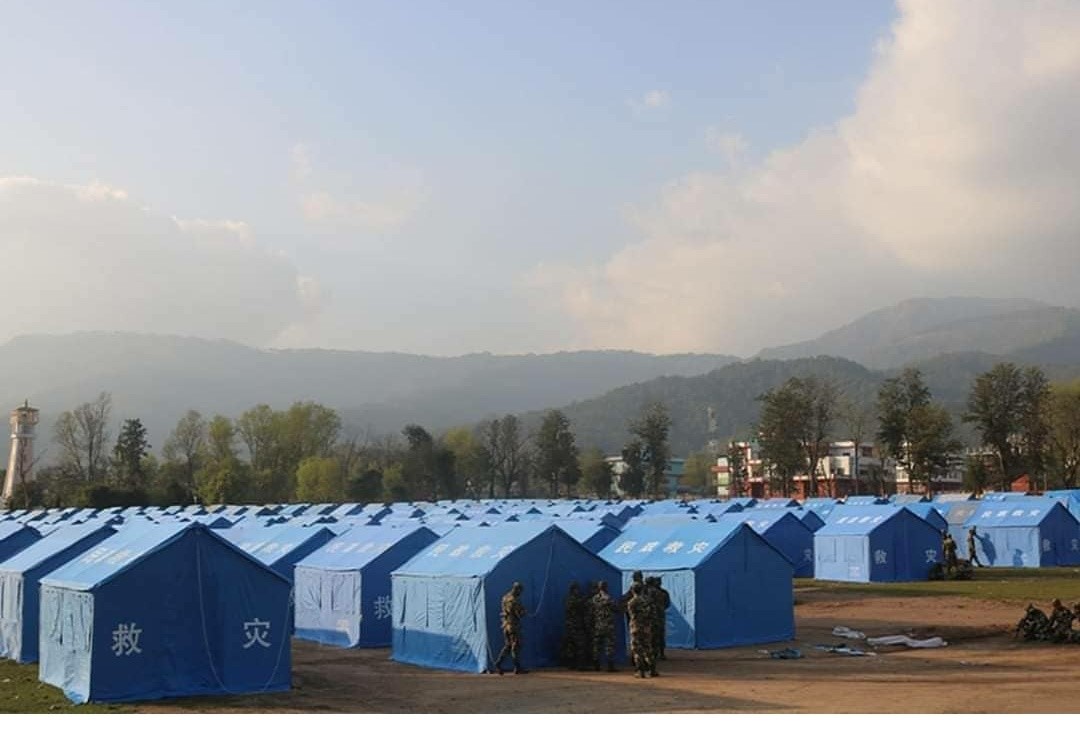COVID-19: Memes and Nepal
Author: Shabnam Thapa

Meme presented atttiude of Nepalese authorities to COVID-19 outbreak. | Source: Facebook
Recently, a Polish friend of mine sent me this meme. At, first I did not understand as it was in Polish. When I translated the meme via Google Lens (thank god for apps like these), I didn’t know whether I should laugh as it was funny to an extent or get offended or be sad by some sort of truth that the meme held. The meme is based on a template form the Office TV series. Basically, the authoritative tall man on the left is portrayed as “WHO congratulating Nepal for not having a single case of coronavirus”. The other man looking somewhat out of place – with confusion on his face and dressed quite eclectically (a blue sport fanny pack, tie with a short sleeve shirt, an outdated haircut) – is described as “Nepal not having testing kits for coronavirus”. Perhaps, I am even more amazed by the fact someone made meme in Polish about Nepal. As of April 1, 2020, Nepal has five confirmed cases of COVID-19 among which one has already recovered.
The low number of cases in Nepal is surprising to people around the world as Nepal shares border with China and has open border with India. Even, people in Nepal are surprised by low number of cases and there are many speculations going around regarding lack of testing kits, cases not being made public, patients not being tested and lack of health services. For someone like me, who is living in Europe away from my family and country, I am terrified every time I look at the number of cases and deaths around the world. I cannot help but think what if the number of cases increases in Nepal and how Nepalese health system will deal with it as we have witnessed how some of the better developed health systems in the world are exhausted, overwhelmed and not been able to cope with the pandemic. For the population of 29 million, only around 1145 tests have been done for suspected cases of COVID-19 in Nepal till 1st April, 2020. We might not know the exact number of cases in Nepal and how serious the problem is. WHO insists on testing every suspected case but is it really feasible in a low income country like Nepal where health resources and capacity of health system even in normal conditions are so limited?

Quarantine sites with 275 beds in Birendranagar, Nepal. | Source: Routine of Nepal Banda
On a brighter side, the government of Nepal has introduced various measures to prevent the outbreak in Nepal. From April 1, the whole country has been on a complete lockdown till 7th April , 2020. People are only allowed to go outside to buy essential goods and medicine. Several preventive messages against COVID-19 are conveyed to public via different channel of communications such as radio, television, SMS messages and Internet. People who have recently returned from abroad have to be in self- quarantine for 14 days. There has already been travel ban on passengers flying from all European countries and the Middle East since March 20 which will extend till 15th April. The government has established quarantine centers and temporary centers across the country.
Next few weeks will be very crucial for Nepal. As the whole country is in lockdown and four cases has been confirmed within a span of a week, many more cases are expected to emerge. Although more people are aware of what the disease is and how it can be spread, there are still high number of people who do not have proper information and take this disease as a mystery. The lockdown has already created serious implications among people who live on daily wages. However, government has introduced program to provide groceries for laborers and vulnerable people. The whole COVID-19 crisis has made people worried regarding their health care expenditure as around 60% of health care expenditure in Nepal is out-of-pocket . Additionally, lack of adequate personal protective equipment for service providers is putting frontline workers in essential sectors such as hospitals, pharmacies, shops, banks etc. into risk. Health crisis like current pandemic affects people all around the world but it makes people in low income countries the most vulnerable as we are not well prepared due to lack of adequate resources for rapid response and preparedness. This situation has also made me think, what kind of health reforms will countries introduce when the pandemic is over and what changes can we as public health professionals can bring so that we can be ready for next health crisis.
I try my best to calm my parents and family and give them correct information about the disease and preventive measures. But still, I fear for my country and how COVID-19 might affect it. All I can do for now is hope for the best and practice social distancing myself, wash hands throughout the day and not lose my sanity while visiting WHO webpage in every few hours to get information about the coronavirus outbreak situation.
Author: Shabnam Thapa
European Masters in Public Health 2018-2020, Jagiellonian University Medical College, University of Sheffield
Blog Zdrowia Publicznego, red. M. Furman, red. M. Zabdyr-Jamróz, Instytut Zdrowia Publicznego UJ CM, Kraków: 6 kwietnia 2020
 FACEBOOK
FACEBOOK INSTAGRAM
INSTAGRAM X
X LINKEDIN
LINKEDIN YOUTUBE
YOUTUBE